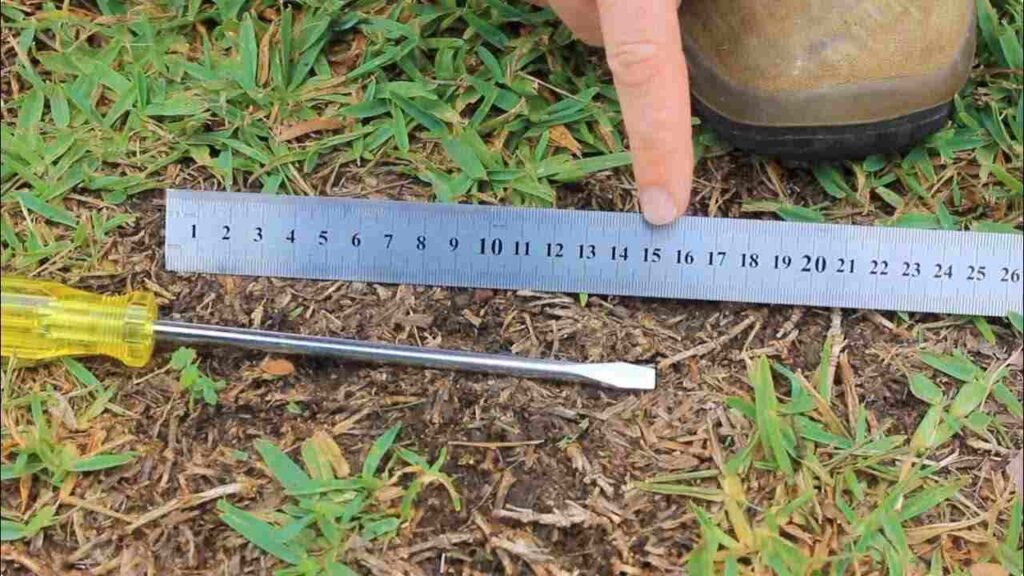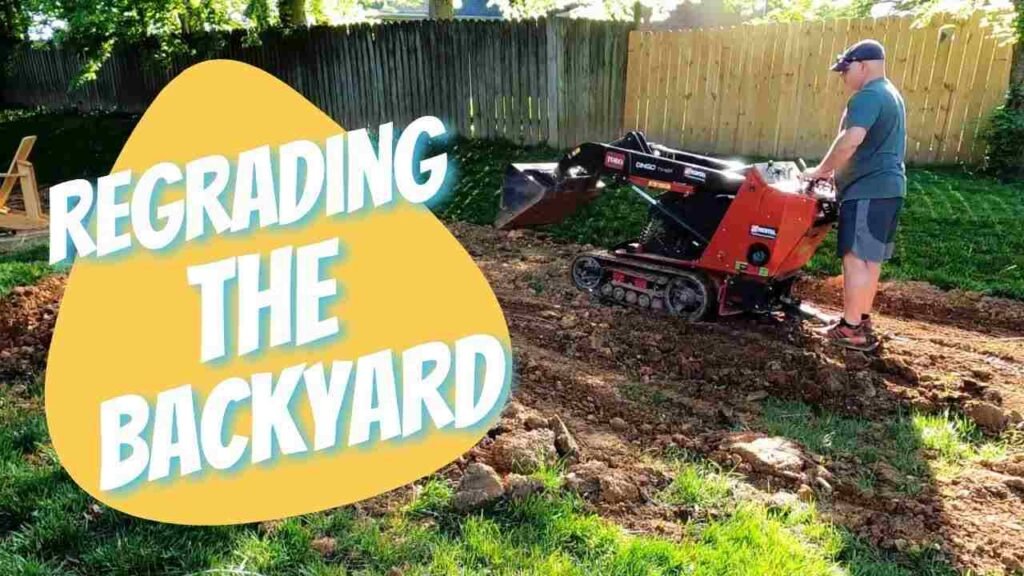Lawn grading plays a crucial role in maintaining the health and longevity of your lawn, especially in Tilton, NH, where varying weather conditions can lead to soil issues. One of the most common problems homeowners face is soil compaction, which can hinder root growth, reduce water infiltration, and impact overall grass health. This process not only improves the drainage and health of your lawn but also contributes to a more beautiful and functional outdoor space. In this guide adn with the extensive assistance of Superior Hydroseeding Liquid Lawns, we’ll explore how effective lawn grading can address soil compaction issues and enhance your lawn’s vitality.

By properly grading your lawn, you can help prevent soil compaction by ensuring that water drains evenly and that the soil remains loose and aerated. Lawn grading services are essential for achieving this balance, as professionals can expertly adjust the slope and contour of your yard to facilitate optimal water flow and soil health. This allows roots to penetrate more deeply and access essential nutrients and oxygen. Additionally, well-graded lawns are less prone to issues like water pooling and erosion, further supporting the health and growth of your grass. Investing in quality lawn grading services ensures a more resilient and vibrant outdoor space.
Understanding Soil Compaction and Its Impact on Lawns
Soil compaction occurs when soil particles are pressed together, reducing pore space and limiting the flow of air, water, and nutrients. This leads to a hard, dense layer that hinders root growth and water infiltration. In lawns, compaction can result in poor grass health, increased water runoff, and reduced oxygen supply to roots. Over time, these conditions can cause thinning grass, increased weed growth, and overall poor lawn performance. Lawn grading helps address these issues by improving soil structure, enhancing water distribution, and reducing runoff. Understanding soil compaction highlights the importance of grading in maintaining a healthy, thriving lawn and optimizing water conservation.
How Lawn Grading Helps Reduce Soil Compaction
Lawn grading is an effective method to alleviate soil compaction by reshaping and leveling the lawn surface. Proper grading involves adjusting the slope to promote even water distribution and prevent water from pooling in low areas. This helps reduce soil density and allows for better aeration, which in turn supports deeper root growth and enhances nutrient uptake. Additionally, grading prevents erosion and soil runoff by directing water flow away from vulnerable areas, reducing soil loss and maintaining a stable lawn surface. By addressing compaction issues through grading, the soil structure is improved, making it easier for grass roots to penetrate and access the necessary resources for healthy growth. Ultimately, this leads to a more resilient and vibrant lawn.
The Benefits of Preventing Soil Compaction for Grass Health
Preventing soil compaction through effective lawn grading brings several benefits to grass health. Reduced compaction improves soil aeration, allowing roots to grow deeper and access more nutrients and water. This results in stronger, healthier grass that can better withstand environmental stresses and pests. Additionally, improved soil structure enhances drainage, reducing the risk of waterlogging and associated issues such as root rot. A well-graded lawn also promotes even growth and a more uniform appearance, contributing to a lush and attractive outdoor space. Overall, preventing soil compaction supports long-term lawn health and reduces the need for extensive maintenance.
Signs Your Lawn May Be Experiencing Soil Compaction
Identifying signs of soil compaction is crucial for timely intervention. Common indicators include poor grass growth, shallow root systems, and a spongy or bumpy lawn surface. Water pooling in low areas and slow drainage can also suggest compaction issues. Additionally, if your lawn feels unusually hard underfoot or shows signs of erosion, these may be symptoms of compacted soil. Observing these signs early allows homeowners to address compaction problems before they severely impact lawn health. Regular inspections and monitoring can help ensure that soil compaction issues are detected and managed effectively.
Techniques for Effective Lawn Grading to Prevent Compaction
Effective lawn grading techniques are essential for preventing soil compaction and ensuring proper water flow. Start by assessing your lawn’s current slope and identifying areas prone to water pooling or erosion. Use a shovel or grading equipment to adjust the slope and create a uniform surface that promotes even water distribution. Incorporating organic matter into the soil can further enhance its structure and reduce compaction. Aeration is another technique that involves creating small holes in the soil to improve air and water penetration. Implementing these techniques helps maintain a well-graded lawn and supports optimal grass growth.

Choosing the Right Equipment for Lawn Grading
Selecting the right equipment for lawn grading is important for achieving effective results. For small areas or DIY projects, tools like shovels, rakes, and hand tillers may be sufficient. However, for larger lawns or more extensive grading, renting or purchasing equipment such as a lawn grader, rototiller, or skid steer loader might be necessary. These tools help efficiently reshape and level the soil, ensuring proper grading and reducing soil compaction. Choosing the appropriate equipment based on the size and complexity of your lawn will help achieve the desired grading results and promote a healthier lawn.
The Role of Professional Lawn Grading Services in Soil Health
Professional lawn grading services play a key role in maintaining soil health by providing expert assessment and grading. Experienced professionals use specialized equipment to accurately reshape and level the lawn, addressing issues such as compaction, drainage, and erosion. They also conduct soil tests to determine the appropriate amendments and ensure optimal grading results. By hiring a professional, homeowners benefit from advanced techniques and a thorough approach that may not be achievable with DIY methods. Professional services help achieve precise grading, enhance soil structure, and support long-term lawn health and functionality.
Seasonal Considerations for Lawn Grading in Tilton, NH
Seasonal considerations are important when planning lawn grading in Tilton, NH, due to its varying climate. The best times for grading are early spring and late summer, when soil conditions are more favorable and weather is less extreme. Grading during these periods allows for better soil preparation and reduces the risk of damaging newly planted grass. Avoid grading during wet or frozen conditions, as these can lead to poor results and further soil compaction. Understanding local climate patterns helps schedule grading activities effectively and ensures that your lawn receives the best care throughout the seasons.
Common Mistakes to Avoid When Grading Your Lawn
Avoiding common mistakes during lawn grading is essential for achieving effective results. One mistake is improper slope adjustment, which can lead to drainage issues and water pooling. Another common error is neglecting soil preparation, such as failing to aerate or amend the soil before grading. Overlooking proper equipment use or grading techniques can also impact the outcome. Additionally, grading during unfavorable weather conditions, like when the soil is too wet or frozen, can compromise the grading quality. By being aware of these pitfalls and following best practices, homeowners can ensure successful lawn grading and a healthier, more resilient lawn.
Maintenance Tips to Keep Your Lawn Healthy After Grading
Maintaining a healthy lawn after grading involves several key practices. Start by monitoring soil moisture levels and adjusting irrigation to ensure even watering without over-saturation. Regularly check for signs of erosion or unevenness and address them promptly. Fertilize and aerate the lawn as needed to support continued grass growth and soil health. Additionally, avoid heavy foot traffic or placing heavy objects on freshly graded areas to prevent soil compaction. Regular maintenance and care help sustain the benefits of grading, ensuring a lush and vibrant lawn for years to come.
Evaluating the Long-Term Benefits of Lawn Grading
Evaluating the long-term benefits of lawn grading involves assessing improvements in lawn health and functionality. Proper grading enhances water distribution, reduces soil compaction, and promotes better root growth, leading to a healthier, more resilient lawn. Over time, well-graded lawns experience reduced erosion, fewer drainage issues, and improved overall appearance. Additionally, grading supports efficient water use and minimizes maintenance needs, making it a valuable investment. By regularly monitoring the lawn’s condition and the results of grading efforts, homeowners can ensure that the long-term benefits continue to support a thriving outdoor space.
Conclusion
In conclusion, proper lawn grading is essential for maintaining a healthy, attractive lawn by addressing soil compaction and ensuring effective water management. By understanding and implementing key grading techniques, homeowners can significantly enhance their lawn’s resilience, promote better grass growth, and reduce common issues such as erosion and poor drainage. Seasonal considerations and the use of appropriate equipment or professional services can further optimize the grading process, leading to long-term benefits. Regular maintenance and awareness of potential challenges will help sustain these improvements, ensuring a vibrant and functional outdoor space. Investing in lawn grading not only improves the immediate appearance of your yard but also supports its health and longevity for years to come.
FAQs
What is lawn grading and why is it important?
Lawn grading involves adjusting the slope and level of your lawn to improve water drainage and prevent soil compaction. It’s important because it enhances grass growth, reduces erosion, and ensures proper water distribution.
2. When is the best time to perform lawn grading in Tilton, NH?
The best times for lawn grading in Tilton are early spring and late summer, when the weather is milder and soil conditions are more favorable. Avoid grading during wet or frozen periods to ensure better results.
3. How can I tell if my lawn needs grading?
Signs that your lawn may need grading include uneven surfaces, pooling water, and areas of poor grass growth. Compacted soil and noticeable erosion are also indicators that grading could be beneficial.
4. What are some common mistakes to avoid during lawn grading?
Common mistakes include improper slope adjustments, neglecting soil preparation, and grading during unfavorable weather conditions. Ensure correct equipment use and avoid overloading areas to prevent further issues.
5. How can I maintain my lawn after grading?
After grading, maintain your lawn by monitoring soil moisture, adjusting irrigation, and regularly checking for erosion. Fertilize and aerate as needed, and avoid heavy traffic on newly graded areas to prevent compaction.


Comments are closed.